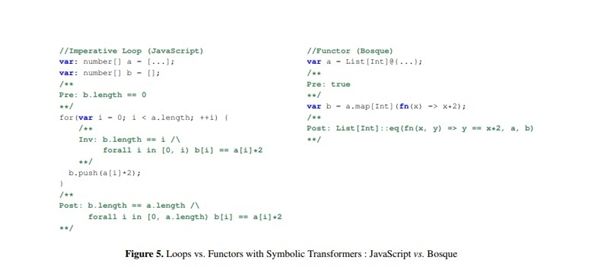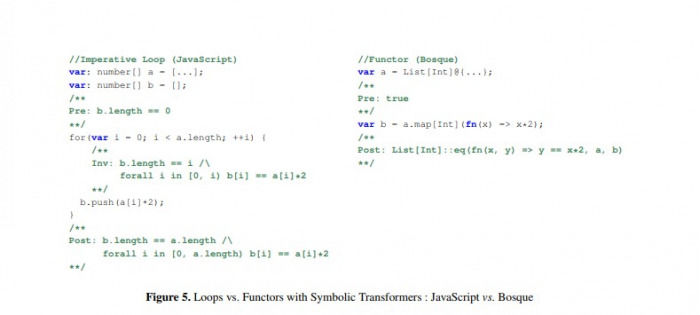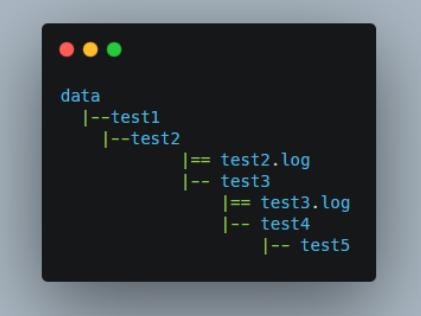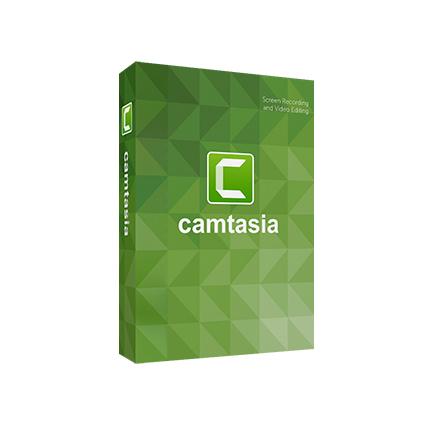Python时间序列数据操作的常用方法总结
 发布于2023-04-25 阅读(0)
发布于2023-04-25 阅读(0)
扫一扫,手机访问
时间序列数据是一种在一段时间内收集的数据类型,它通常用于金融、经济学和气象学等领域,经常通过分析来了解随着时间的推移的趋势和模式

Pandas是Python中一个强大且流行的数据操作库,特别适合处理时间序列数据。它提供了一系列工具和函数可以轻松加载、操作和分析时间序列数据。
在本文中,我们介绍时间序列数据的索引和切片、重新采样和滚动窗口计算以及其他有用的常见操作,这些都是使用Pandas操作时间序列数据的关键技术。
数据类型
Python
在Python中,没有专门用于表示日期的内置数据类型。一般情况下都会使用datetime模块提供的datetime对象进行日期时间的操作。
import datetime
t = datetime.datetime.now()
print(f"type: {type(t)} and t: {t}")
#type: and t: 2022-12-26 14:20:51.278230 一般情况下我们都会使用字符串的形式存储日期和时间。所以在使用时我们需要将这些字符串进行转换成datetime对象。
一般情况下时间的字符串有以下格式:
- YYYY-MM-DD (e.g. 2022-01-01)
- YYYY/MM/DD (e.g. 2022/01/01)
- DD-MM-YYYY (e.g. 01-01-2022)
- DD/MM/YYYY (e.g. 01/01/2022)
- MM-DD-YYYY (e.g. 01-01-2022)
- MM/DD/YYYY (e.g. 01/01/2022)
- HH:MM:SS (e.g. 11:30:00)
- HH:MM:SS AM/PM (e.g. 11:30:00 AM)
- HH:MM AM/PM (e.g. 11:30 AM)
strptime 函数以字符串和格式字符串作为参数,返回一个datetime对象。
string = '2022-01-01 11:30:09'
t = datetime.datetime.strptime(string, "%Y-%m-%d %H:%M:%S")
print(f"type: {type(t)} and t: {t}")
#type: and t: 2022-01-01 11:30:09 格式字符串如下:

还可以使用strftime函数将datetime对象转换回特定格式的字符串表示。
t = datetime.datetime.now()
t_string = t.strftime("%m/%d/%Y, %H:%M:%S")
#12/26/2022, 14:38:47
t_string = t.strftime("%b/%d/%Y, %H:%M:%S")
#Dec/26/2022, 14:39:32Unix时间(POSIX时间或epoch时间)是一种将时间表示为单个数值的系统。它表示自1970年1月1日星期四00:00:00协调世界时(UTC)以来经过的秒数。
Unix时间和时间戳通常可以互换使用。Unix时间是创建时间戳的标准版本。一般情况下使用整数或浮点数据类型用于存储时间戳和Unix时间。
我们可以使用time模块的mktime方法将datetime对象转换为Unix时间整数。也可以使用datetime模块的fromtimestamp方法。
#convert datetime to unix time import time from datetime import datetime t = datetime.now() unix_t = int(time.mktime(t.timetuple())) #1672055277 #convert unix time to datetime unix_t = 1672055277 t = datetime.fromtimestamp(unix_t) #2022-12-26 14:47:57
使用dateutil模块来解析日期字符串获得datetime对象。
from dateutil import parser
date = parser.parse("29th of October, 1923")
#datetime.datetime(1923, 10, 29, 0, 0)Pandas
Pandas提供了三种日期数据类型:
1、Timestamp或DatetimeIndex:它的功能类似于其他索引类型,但也具有用于时间序列操作的专门函数。
t = pd.to_datetime("29/10/1923", dayfirst=True)
#Timestamp('1923-10-29 00:00:00')
t = pd.Timestamp('2019-01-01', tz = 'Europe/Berlin')
#Timestamp('2019-01-01 00:00:00+0100', tz='Europe/Berlin')
t = pd.to_datetime(["04/23/1920", "10/29/1923"])
#DatetimeIndex(['1920-04-23', '1923-10-29'], dtype='datetime64[ns]', freq=None)2、period或PeriodIndex:一个有开始和结束的时间间隔。它由固定的间隔组成。
t = pd.to_datetime(["04/23/1920", "10/29/1923"])
period = t.to_period("D")
#PeriodIndex(['1920-04-23', '1923-10-29'], dtype='period[D]')3、Timedelta或TimedeltaIndex:两个日期之间的时间间隔。
delta = pd.TimedeltaIndex(data =['1 days 03:00:00', '2 days 09:05:01.000030']) """ TimedeltaIndex(['1 days 02:00:00', '1 days 06:05:01.000030'], dtype='timedelta64[ns]', freq=None) """
在Pandas中,可以使用to_datetime方法将对象转换为datetime数据类型或进行任何其他转换。
import pandas as pd
df = pd.read_csv("dataset.txt")
df.head()
"""
date value
0 1991-07-01 3.526591
1 1991-08-01 3.180891
2 1991-09-01 3.252221
3 1991-10-01 3.611003
4 1991-11-01 3.565869
"""
df.info()
"""
RangeIndex: 204 entries, 0 to 203
Data columns (total 2 columns):
# Column Non-Null Count Dtype
--- ------ -------------- -----
0 date 204 non-null object
1 value 204 non-null float64
dtypes: float64(1), object(1)
memory usage: 3.3+ KB
"""
# Convert to datetime
df["date"] = pd.to_datetime(df["date"], format = "%Y-%m-%d")
df.info()
"""
RangeIndex: 204 entries, 0 to 203
Data columns (total 2 columns):
# Column Non-Null Count Dtype
--- ------ -------------- -----
0 date 204 non-null datetime64[ns]
1 value 204 non-null float64
dtypes: datetime64[ns](1), float64(1)
memory usage: 3.3 KB
"""
# Convert to Unix
df['unix_time'] = df['date'].apply(lambda x: x.timestamp())
df.head()
"""
date value unix_time
0 1991-07-01 3.526591 678326400.0
1 1991-08-01 3.180891 681004800.0
2 1991-09-01 3.252221 683683200.0
3 1991-10-01 3.611003 686275200.0
4 1991-11-01 3.565869 688953600.0
"""
df["date_converted_from_unix"] = pd.to_datetime(df["unix_time"], unit = "s")
df.head()
"""
date value unix_time date_converted_from_unix
0 1991-07-01 3.526591 678326400.0 1991-07-01
1 1991-08-01 3.180891 681004800.0 1991-08-01
2 1991-09-01 3.252221 683683200.0 1991-09-01
3 1991-10-01 3.611003 686275200.0 1991-10-01
4 1991-11-01 3.565869 688953600.0 1991-11-01
""" 我们还可以使用parse_dates参数在任何文件加载时直接声明日期列。
df = pd.read_csv("dataset.txt", parse_dates=["date"])
df.info()
"""
RangeIndex: 204 entries, 0 to 203
Data columns (total 2 columns):
# Column Non-Null Count Dtype
--- ------ -------------- -----
0 date 204 non-null datetime64[ns]
1 value 204 non-null float64
dtypes: datetime64[ns](1), float64(1)
memory usage: 3.3 KB
""" 如果是单个时间序列的数据,最好将日期列作为数据集的索引。
df.set_index("date",inplace=True)
"""
Value
date
1991-07-01 3.526591
1991-08-01 3.180891
1991-09-01 3.252221
1991-10-01 3.611003
1991-11-01 3.565869
... ...
2008-02-01 21.654285
2008-03-01 18.264945
2008-04-01 23.107677
2008-05-01 22.912510
2008-06-01 19.431740
"""Numpy也有自己的datetime类型np.Datetime64。特别是在大型数据集时,向量化是非常有用的,应该优先使用。
import numpy as np
arr_date = np.array('2000-01-01', dtype=np.datetime64)
arr_date
#array('2000-01-01', dtype='datetime64[D]')
#broadcasting
arr_date = arr_date + np.arange(30)
"""
array(['2000-01-01', '2000-01-02', '2000-01-03', '2000-01-04',
'2000-01-05', '2000-01-06', '2000-01-07', '2000-01-08',
'2000-01-09', '2000-01-10', '2000-01-11', '2000-01-12',
'2000-01-13', '2000-01-14', '2000-01-15', '2000-01-16',
'2000-01-17', '2000-01-18', '2000-01-19', '2000-01-20',
'2000-01-21', '2000-01-22', '2000-01-23', '2000-01-24',
'2000-01-25', '2000-01-26', '2000-01-27', '2000-01-28',
'2000-01-29', '2000-01-30'], dtype='datetime64[D]')
"""有用的函数
下面列出的是一些可能对时间序列有用的函数。
df = pd.read_csv("dataset.txt", parse_dates=["date"])
df["date"].dt.day_name()
"""
0 Monday
1 Thursday
2 Sunday
3 Tuesday
4 Friday
...
199 Friday
200 Saturday
201 Tuesday
202 Thursday
203 Sunday
Name: date, Length: 204, dtype: object
"""DataReader
Pandas_datareader是pandas库的一个辅助库。它提供了许多常见的金融时间序列数据。
#pip install pandas-datareader from pandas_datareader import wb #GDP per Capita From World Bank df = wb.download(indicator='NY.GDP.PCAP.KD', country=['US', 'FR', 'GB', 'DK', 'NO'], start=1960, end=2019) """ NY.GDP.PCAP.KD country year Denmark 2019 57203.027794 2018 56563.488473 2017 55735.764901 2016 54556.068955 2015 53254.856370 ... ... United States 1964 21599.818705 1963 20701.269947 1962 20116.235124 1961 19253.547329 1960 19135.268182 [300 rows x 1 columns] """
日期范围
我们可以使用pandas的date_range方法定义一个日期范围。
pd.date_range(start="2021-01-01", end="2022-01-01", freq="D")
"""
DatetimeIndex(['2021-01-01', '2021-01-02', '2021-01-03', '2021-01-04',
'2021-01-05', '2021-01-06', '2021-01-07', '2021-01-08',
'2021-01-09', '2021-01-10',
...
'2021-12-23', '2021-12-24', '2021-12-25', '2021-12-26',
'2021-12-27', '2021-12-28', '2021-12-29', '2021-12-30',
'2021-12-31', '2022-01-01'],
dtype='datetime64[ns]', length=366, freq='D')
"""
pd.date_range(start="2021-01-01", end="2022-01-01", freq="BM")
"""
DatetimeIndex(['2021-01-29', '2021-02-26', '2021-03-31', '2021-04-30',
'2021-05-31', '2021-06-30', '2021-07-30', '2021-08-31',
'2021-09-30', '2021-10-29', '2021-11-30', '2021-12-31'],
dtype='datetime64[ns]', freq='BM')
"""
fridays= pd.date_range('2022-11-01', '2022-12-31', freq="W-FRI")
"""
DatetimeIndex(['2022-11-04', '2022-11-11', '2022-11-18', '2022-11-25',
'2022-12-02', '2022-12-09', '2022-12-16', '2022-12-23',
'2022-12-30'],
dtype='datetime64[ns]', freq='W-FRI')
"""
我们可以使用timedelta_range方法创建一个时间序列。
t = pd.timedelta_range(0, periods=10, freq="H") """ TimedeltaIndex(['0 days 00:00:00', '0 days 01:00:00', '0 days 02:00:00', '0 days 03:00:00', '0 days 04:00:00', '0 days 05:00:00', '0 days 06:00:00', '0 days 07:00:00', '0 days 08:00:00', '0 days 09:00:00'], dtype='timedelta64[ns]', freq='H') """
格式化
我们dt.strftime方法改变日期列的格式。
df["new_date"] = df["date"].dt.strftime("%b %d, %Y")
df.head()
"""
date value new_date
0 1991-07-01 3.526591 Jul 01, 1991
1 1991-08-01 3.180891 Aug 01, 1991
2 1991-09-01 3.252221 Sep 01, 1991
3 1991-10-01 3.611003 Oct 01, 1991
4 1991-11-01 3.565869 Nov 01, 1991
"""解析
解析datetime对象并获得日期的子对象。
df["year"] = df["date"].dt.year df["month"] = df["date"].dt.month df["day"] = df["date"].dt.day df["calendar"] = df["date"].dt.date df["hour"] = df["date"].dt.time df.head() """ date value year month day calendar hour 0 1991-07-01 3.526591 1991 7 1 1991-07-01 00:00:00 1 1991-08-01 3.180891 1991 8 1 1991-08-01 00:00:00 2 1991-09-01 3.252221 1991 9 1 1991-09-01 00:00:00 3 1991-10-01 3.611003 1991 10 1 1991-10-01 00:00:00 4 1991-11-01 3.565869 1991 11 1 1991-11-01 00:00:00 """
还可以重新组合它们。
df["date_joined"] = pd.to_datetime(df[["year","month","day"]]) print(df["date_joined"]) """ 0 1991-07-01 1 1991-08-01 2 1991-09-01 3 1991-10-01 4 1991-11-01 ... 199 2008-02-01 200 2008-03-01 201 2008-04-01 202 2008-05-01 203 2008-06-01 Name: date_joined, Length: 204, dtype: datetime64[ns]
过滤查询
使用loc方法来过滤DataFrame。
df = df.loc["2021-01-01":"2021-01-10"]

truncate 可以查询两个时间间隔中的数据
df_truncated = df.truncate('2021-01-05', '2022-01-10')
常见数据操作
下面就是对时间序列数据集中的值执行操作。我们使用yfinance库创建一个用于示例的股票数据集。
#get google stock price data import yfinance as yf start_date = '2020-01-01' end_date = '2023-01-01' ticker = 'GOOGL' df = yf.download(ticker, start_date, end_date) df.head() """ Date Open High Low Close Adj Close Volume 2020-01-02 67.420502 68.433998 67.324501 68.433998 68.433998 27278000 2020-01-03 67.400002 68.687500 67.365997 68.075996 68.075996 23408000 2020-01-06 67.581497 69.916000 67.550003 69.890503 69.890503 46768000 2020-01-07 70.023003 70.175003 69.578003 69.755501 69.755501 34330000 2020-01-08 69.740997 70.592499 69.631500 70.251999 70.251999 35314000 """
计算差值
diff函数可以计算一个元素与另一个元素之间的插值。
#subtract that day's value from the previous day df["Diff_Close"] = df["Close"].diff() #Subtract that day's value from the day's value 2 days ago df["Diff_Close_2Days"] = df["Close"].diff(periods=2)

累计总数
df["Volume_Cumulative"] = df["Volume"].cumsum()

滚动窗口计算
滚动窗口计算(移动平均线)。
df["Close_Rolling_14"] = df["Close"].rolling(14).mean() df.tail()

可以对我们计算的移动平均线进行可视化

常用的参数:
- center:决定滚动窗口是否应以当前观测值为中心。
- min_periods:窗口中产生结果所需的最小观测次数。
s = pd.Series([1, 2, 3, 4, 5]) #the rolling window will be centered on each observation rolling_mean = s.rolling(window=3, center=True).mean() """ 0 NaN 1 2.0 2 3.0 3 4.0 4 NaN dtype: float64 Explanation: first window: [na 1 2] = na second window: [1 2 3] = 2 """ # the rolling window will not be centered, #and will instead be anchored to the left side of the window rolling_mean = s.rolling(window=3, center=False).mean() """ 0 NaN 1 NaN 2 2.0 3 3.0 4 4.0 dtype: float64 Explanation: first window: [na na 1] = na second window: [na 1 2] = na third window: [1 2 3] = 2 """
平移
Pandas有两个方法,shift()和tshift(),它们可以指定倍数移动数据或时间序列的索引。Shift()移位数据,而tshift()移位索引。
#shift the data df_shifted = df.shift(5,axis=0) df_shifted.head(10) #shift the indexes df_tshifted = df.tshift(periods = 4, freq = 'D') df_tshifted.head(10)

df_shifted

df_tshifted
时间间隔转换
在 Pandas 中,操 to_period 函数允许将日期转换为特定的时间间隔。可以获取具有许多不同间隔或周期的日期
df["Period"] = df["Date"].dt.to_period('W')
频率
Asfreq方法用于将时间序列转换为指定的频率。
monthly_data = df.asfreq('M', method='ffill')
常用参数:
freq:数据应该转换到的频率。这可以使用字符串别名(例如,'M'表示月,'H'表示小时)或pandas偏移量对象来指定。
method:如何在转换频率时填充缺失值。这可以是'ffill'(向前填充)或'bfill'(向后填充)之类的字符串。
采样
resample可以改变时间序列频率并重新采样。我们可以进行上采样(到更高的频率)或下采样(到更低的频率)。因为我们正在改变频率,所以我们需要使用一个聚合函数(比如均值、最大值等)。
resample方法的参数:
rule:数据重新采样的频率。这可以使用字符串别名(例如,'M'表示月,'H'表示小时)或pandas偏移量对象来指定。
#down sample
monthly_data = df.resample('M').mean()
#up sample
minute_data = data.resample('T').ffill()
百分比变化
使用pct_change方法来计算日期之间的变化百分比。
df["PCT"] = df["Close"].pct_change(periods=2) print(df["PCT"]) """ Date 2020-01-02 NaN 2020-01-03 NaN 2020-01-06 0.021283 2020-01-07 0.024671 2020-01-08 0.005172 ... 2022-12-19 -0.026634 2022-12-20 -0.013738 2022-12-21 0.012890 2022-12-22 -0.014154 2022-12-23 -0.003907 Name: PCT, Length: 752, dtype: float64 """
总结
在Pandas和NumPy等库的帮助下,可以对时间序列数据执行广泛的操作,包括过滤、聚合和转换。本文介绍的是一些在工作中经常遇到的常见操作,希望对你有所帮助。
产品推荐
-

售后无忧
立即购买>- DAEMON Tools Lite 10【序列号终身授权 + 中文版 + Win】
-
¥150.00
office旗舰店
-

售后无忧
立即购买>- DAEMON Tools Ultra 5【序列号终身授权 + 中文版 + Win】
-
¥198.00
office旗舰店
-

售后无忧
立即购买>- DAEMON Tools Pro 8【序列号终身授权 + 中文版 + Win】
-
¥189.00
office旗舰店
-

售后无忧
立即购买>- CorelDRAW X8 简体中文【标准版 + Win】
-
¥1788.00
office旗舰店
-
正版软件
- WordPress网站头部错位对用户体验的影响及解决方法
- WordPress网站头部错位如何影响用户体验及解决建议在网站设计中,头部是用户首次接触到的地方,扮演着非常重要的角色。如果WordPress网站的头部错位,将会直接影响用户体验,降低用户对网站的信任感和使用体验。本文将讨论头部错位的影响以及解决建议,并提供具体的代码示例。头部错位如何影响用户体验:视觉不舒适:头部错位会让用户感觉页面布局混乱,视觉上的不舒适
- 5分钟前 用户体验 头部错位 0
-
正版软件
- 学习如何使用PHP实现分页功能的详细指南
- PHP实现分页功能的完整教程在网站开发中,常常会遇到需要分页展示大量数据的情况,为了提升用户体验和减少服务器负担,我们可以通过PHP来实现分页功能。本文将为大家介绍如何使用PHP实现分页功能,包括实现分页逻辑、编写代码示例和展示分页效果。一、分页逻辑在实现分页功能之前,首先需要了解分页的基本逻辑。分页通常包括以下几个参数:当前页码:表示当前所在的页数。每页显
- 10分钟前 分页 教程 PHP 0
-
正版软件
- 实现PHP简体到中文的转换
- PHP简体转中文的实现方法在开发网站或应用程序时,经常会遇到需要将简体中文转换为繁体中文的需求,这在涉及国际化或地区化的项目中尤为重要。在PHP中实现简体中文转换为繁体中文的过程并不复杂,下面将介绍具体的实现方法并提供代码示例。1.使用第三方库在PHP中,有许多第三方库可用于简繁体转换,其中最常用的是opencc-php。这是一个基于OpenCC开源
- 25分钟前 PHP 实现 简体转中文 0
-
正版软件
- 编写PHP文件的完整指南
- 如何在线编写PHP文件?一站式指南,需要具体代码示例PHP是一种广泛使用的服务器端脚本语言,用于开发Web应用程序。在编写PHP文件时,有时候我们可能需要在线编辑PHP文件,这篇文章将为您提供一站式指南,详细介绍如何在线编写PHP文件,并提供具体的代码示例。一、选择适合的在线编辑工具在线编写PHP文件的首要步骤是选择一个适合的在线编辑工具。以下是一些常用的在
- 40分钟前 代码编辑器 PHP实时编辑 在线IDE 0
-
 正版软件
正版软件
- 确保 RESTful 王国安全:JAX-RS 的安全性指南
- JAX-RS安全性的重要性RESTfulapi已成为现代WEB应用程序中广泛使用的架构风格。这些API允许应用程序与外部客户机通信,交换数据并执行操作。然而,随着RESTfulAPI的普及,保护它们免受安全威胁也变得至关重要。JAX-RS(JavaAPIforRESTfulWebServices)是一个用于构建RESTfulAPI的流行Java框架,提供了强有力的安全性功能来应对这些威胁。JAX-RS安全性功能JAX-RS提供了各种安全性功能,包括:身份验证:确保只有授权用户才能访问你的API。授权:控制
- 1小时前 22:59 身份验证 安全性 授权 JAX-RS 0
最新发布
-
 1
1
-
 2
2
-
3
- Vue组件中如何处理图片预览和缩放问题
- 448天前
-
 4
4
-
 5
5
-
 6
6
- Python实战教程:批量转换多种音乐格式
- 619天前
-
7
- WebSocket协议的优势与劣势分析
- 450天前
-
8
- java动态代理实例代码分析
- 620天前
-
 9
9
- java io文件操作删除文件或文件夹的方法
- 617天前
相关推荐
热门关注
-

- Xshell 6 简体中文
- ¥899.00-¥1149.00
-

- DaVinci Resolve Studio 16 简体中文
- ¥2550.00-¥2550.00
-

- Camtasia 2019 简体中文
- ¥689.00-¥689.00
-

- Luminar 3 简体中文
- ¥288.00-¥288.00
-

- Apowersoft 录屏王 简体中文
- ¥129.00-¥339.00